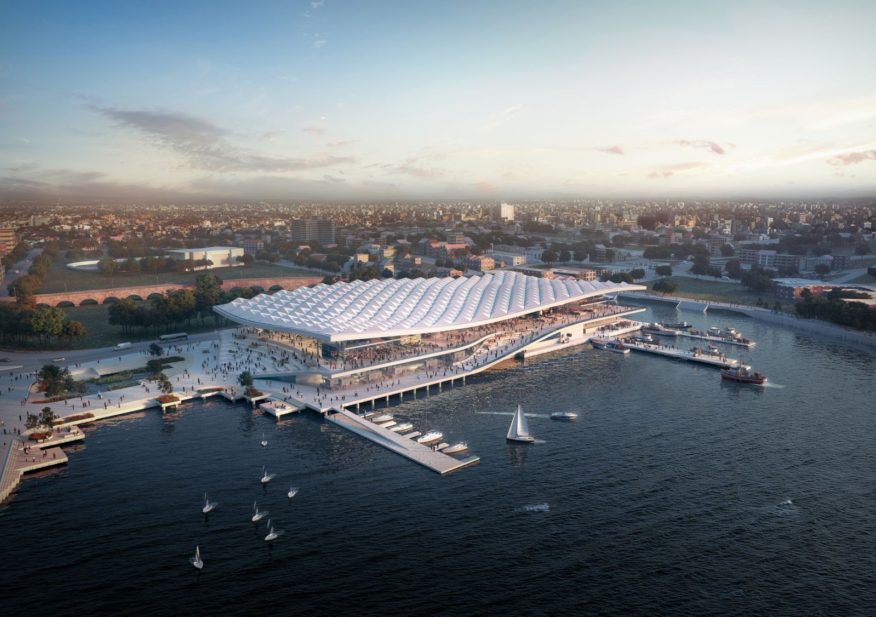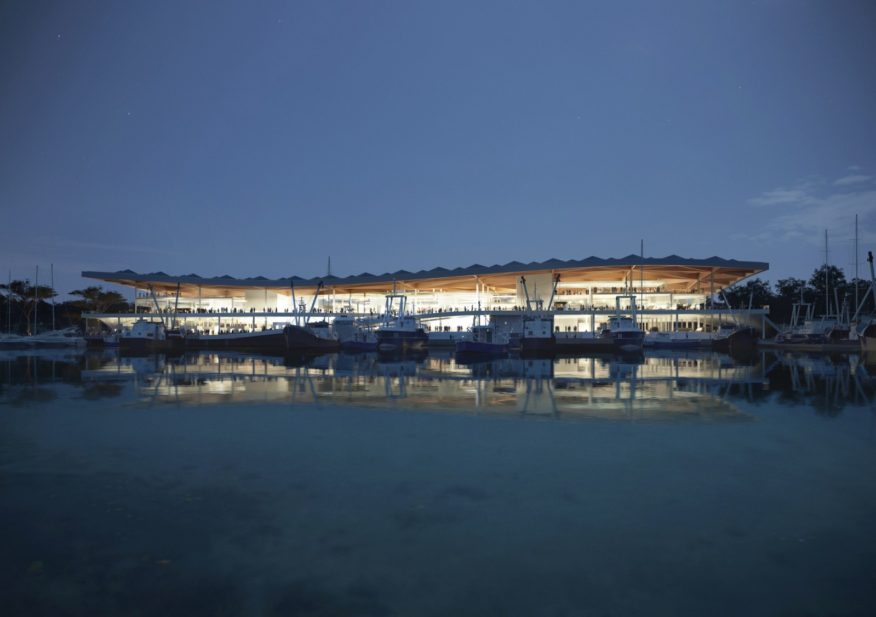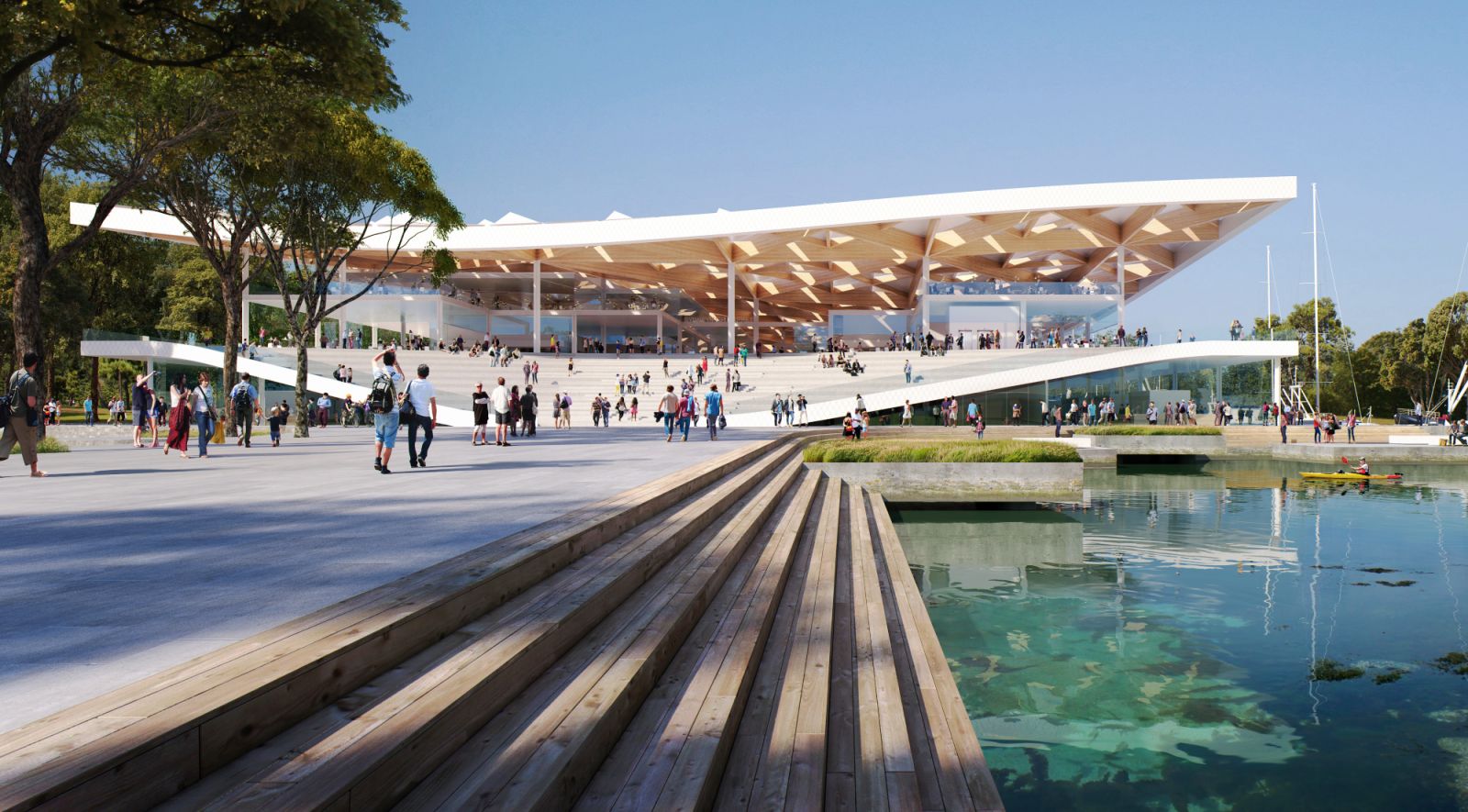As a continuation of iconic destinations connected by the foreshore promenade, the new Sydney Fish Market will take its place at the head of Blackwattle Bay. The Sydney Fish Market, currently housed in a series of old warehouses and post-industrial buildings, is one of the most significant community and tourist destinations in the city. 3XN has approached this project with the specific goal of creating a fish market that is much more than just a fish market.

The building will serve many purposes when it is finished – a working fish market, an amenity for the city, a cultural destination, an urban connector, and an inspiring icon along the would-renowned Sydney Harbour. IThe new site of Sydney Fish Market is a 3.6-hectare site at the head of Blackwattle Bay. The design capitalises on the opportunity to link the bay with Wentworth Park to the south, and the entire community with this cultural icon.

The new facility goes beyond its immediate role of the sale and distribution of seafood and provides an array of varied experiences that enable change and responsiveness to the future, creating a destination for locals and tourists alike that is an integral part of the city fabric. The existing fish market has a conflict of functions. Like all other fish markets in the world, visitors come to get a sense of the behind the scenes activities, but this interrupts the daily operations. In response, some markets have had to limit visitors.

In the new building, the ground floor hosts all the functions traditionally associated with fish markets – the landing and loading of fish, the wholesale market, and the auction hall. The staircases that lead from the plazas to the upper ground are a continuation of the surrounding landscape and act as an invitation for people to enter the market. The stairs also double as seating, creating a public space where people can enjoy their food and the view over the bay.

The upper ground houses fresh seafood retailers, restaurants and cafés. The design focuses on maintaining a human scale and creating a true market atmosphere – just like historic marketplaces or bazaars with a series of small stalls that are connected. The aim is to create an intimate market atmosphere. A sweeping timber-and-aluminium roof floats over the building like a canopy; it ties all the various program elements together in one elegant move, while giving the building an iconic presence along the harbour.

Beyond design, the roof has four primary efficiency and sustainability attributes: shading, daylighting, ventilation, collection of rainwater and the possibility for solar cells harvest the strong Sydney sun. The roof’s triangular openings allow abundant natural light into the building, while their orientation shades the building from the harshest sun. The market has been designed to be as permeable as possible to maximise natural ventilation and minimise the need for air conditioning.

With very clearly articulated, and very ambitious, sustainability goals that include a 50-percent reduction in energy consumption, a 50-percent reduction in water consumption, and a 50-percent reduction in waste compared with the existing fish market, this new building has sustainability at its core. Biological and mechanical water quality systems are an integral part of the design of the new fish market, focused on conserving the valuable resource. A comprehensive energy optimisation strategy has been employed to reduce consumption and demand while producing energy from renewable sources.

The strategy includes the possibility for absorption chillers to turn excess heat from refrigeration into cold water for cooling, use of excess heat sources to power the hot water system and space heating. Potential use of leftover ice to pre-cool air for refrigerated areas. Passive conditioning utilises canopy shading, wind capture, thermal mass and excess cool air from other zones to create a comfortable environment with minimal reliance on active conditioning systems. The waste systems employed in the new fish market aim to recycle all industrial food-waste. Source and images Courtesy of 3XN.

